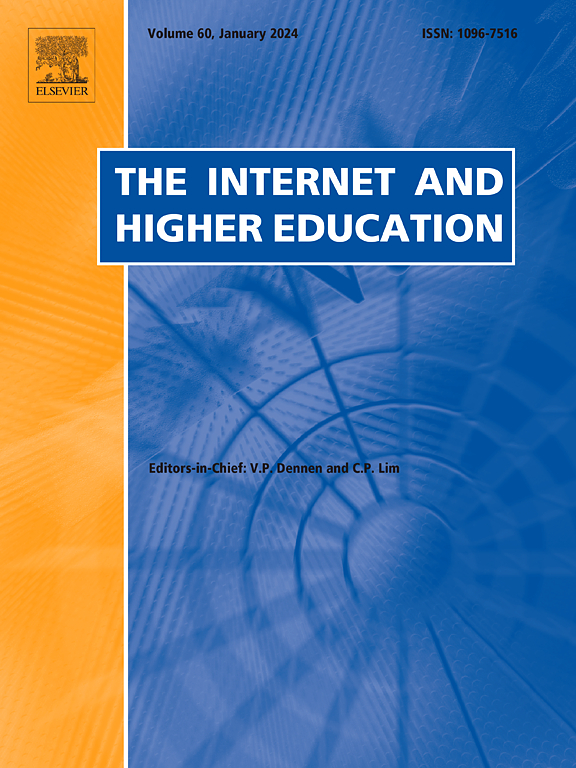The generation mechanism of teachers' anxiety toward digital human instructors in higher education: A mixed-methods perspective
IF 6.8
1区 教育学
Q1 EDUCATION & EDUCATIONAL RESEARCH
引用次数: 0
Abstract
Digital Human Instructors (DHIs) are revolutionizing higher education by providing personalized and interactive learning experiences. However, the adoption of DHIs also brings about complex challenges related to teacher anxiety, particularly concerning professional security, ethics, and the broader implications of technology in education. Addressing the barriers to DHI adoption is crucial for safeguarding both educational quality and teacher well-being. This study aims to investigate these barriers by developing a theoretical model that integrates elements from Social Ecological Systems Theory, considering both micro-level individual factors (such as neuroticism and personal innovativeness) and meso-level social factors (such as negative word-of-mouth). Data were collected from 500 university teachers and analyzed using Partial Least Squares Structural Equation Modeling (PLS-SEM) and fuzzy-set Qualitative Comparative Analysis (fsQCA). The PLS-SEM results revealed that neuroticism and negative word-of-mouth (WOM) have a significant positive impact on technology anxiety, while personal innovativeness has no significant direct effect. Moreover, perceived invasiveness plays a key mediating role in the relationships between neuroticism and technology anxiety, as well as between negative WOM and technology anxiety, whereas perceived authenticity does not exhibit a significant mediating effect. The fsQCA findings further revealed that technology anxiety does not stem from a single causal pathway. Instead, four configurations that include the presence and absence of certain conditions can lead to this desirable outcome. These findings not only contribute to the academic discourse on DHI adoption but also provide practical insights for educational managers seeking to mitigate teacher anxiety and enhance user protection in this dynamic educational environment.
高等教育中教师对数字化人类讲师焦虑的产生机制:混合方法视角
数字人类讲师(DHIs)通过提供个性化和互动的学习体验,正在彻底改变高等教育。然而,DHIs的采用也带来了与教师焦虑相关的复杂挑战,特别是在职业安全、道德和技术在教育中的更广泛影响方面。消除采用个人健康指数的障碍对于保障教育质量和教师福祉至关重要。本研究旨在整合社会生态系统理论的要素,结合微观层面的个体因素(如神经质和个人创新)和中观层面的社会因素(如负面的口碑),建立一个理论模型来研究这些障碍。采用偏最小二乘结构方程模型(PLS-SEM)和模糊集定性比较分析法(fsQCA)对500名高校教师的数据进行分析。PLS-SEM结果显示,神经质和负面口碑对技术焦虑有显著的正向影响,而个人创新对技术焦虑没有显著的直接影响。此外,感知侵入性在神经质与技术焦虑、负向WOM与技术焦虑之间的关系中起关键中介作用,而感知真实性在技术焦虑与负向WOM之间的中介作用不显著。fsQCA的研究结果进一步表明,技术焦虑并非源于单一的因果途径。相反,包括存在和不存在某些条件的四种配置可以导致这种理想的结果。这些发现不仅有助于DHI采用的学术论述,而且为教育管理者在这个动态的教育环境中寻求减轻教师焦虑和加强用户保护提供了实践见解。
本文章由计算机程序翻译,如有差异,请以英文原文为准。
求助全文
约1分钟内获得全文
求助全文
来源期刊

Internet and Higher Education
EDUCATION & EDUCATIONAL RESEARCH-
CiteScore
19.30
自引率
4.70%
发文量
30
审稿时长
40 days
期刊介绍:
The Internet and Higher Education is a quarterly peer-reviewed journal focused on contemporary issues and future trends in online learning, teaching, and administration within post-secondary education. It welcomes contributions from diverse academic disciplines worldwide and provides a platform for theory papers, research studies, critical essays, editorials, reviews, case studies, and social commentary.
 求助内容:
求助内容: 应助结果提醒方式:
应助结果提醒方式:


